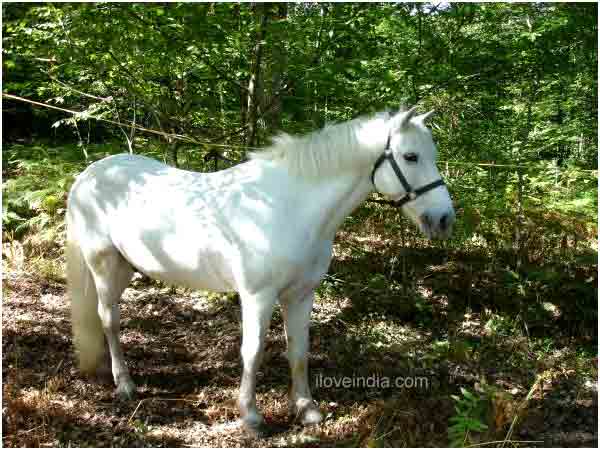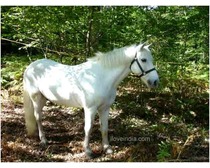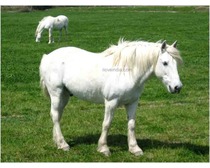Camargue horse, inhabiting the Camargue part of Southern France, is believed to have descended from prehistoric horses. Explore some more interesting facts & amazing information on Camargue horses.
Facts About Camargue Horse
Camargue horses represent the ancient breed of horses that inhabits the Camargue part of Southern France. These horses are believed to have descended from the prehistoric horses, which lived during the Paleolithic period i.e. around 17,000 years ago. Camargue are small horses that are widely popular for their intelligence and agility. They are extensively used for games and long distance riding. Camargue horses are fairy white in color and exhibit strong features. The image of a Camargue horse galloping by water has been a popular romantic image since years. In the following lines, we bring you some really interesting facts and amazing information on Camargue horses.

Facts About Camargue Horses
Kingdom: Animalia
Phylum: Chordata
Class: Mammalia
Order: Perissodactyla
Family: Equidae
Genus: Equus
Species: E.ferus
Height: 1.35 to 1.50 m (13 to 14 hands)
Weight: 300 to 400 kg
Life Span: 20-25 years
Diet: Surface vegetation: herbs, shrubs and leafy grasses
Call: Varies from soft whinny cry to a shrill cry
Habitat: Watery plains and salt marshes in the parts of southeast France
Habits: Sociable; moves in small herds
Age of Maturity: Male: 1-2 years; Female: 18 months
Mating Time: Late spring
Gestation Period: 11-13 months
Number of Offspring: One
Interesting & Amazing On About Camargue Horses
- Despite being an ancient species, camargue horses came to be officially recognized as a breed only in the year 1967.
- Camargue horses are gray in color. Adult horses have black skin underlying the white hair coat.
- At the time of birth, these horses have black or dark brown hair coat. As they grow up and become adults, their hair coat gets mixed with white hair, until the entire body is covered with white hairs.
- Camargue horses are herbivores and have teeth adapted for the food habit. Their incisors prove helpful tearing the plants; while the premolars allow them to chew the food properly.
- During spring, these horses feed on samphire and new shoots of tall reeds. In winter, their staple food is dried grass and goosefoot.
- Camargue horses can easily walk for long distances and even withstand extreme conditions. They can also survive without food for a long period of time.
- These horses have sure-footedness, which gives them excellent riding ability over the dangerous terrain.
- Camargue horses are known to have survived in harsh conditions of the wetlands of the Rhone delta for over centuries.
- These horses have a calm temperament and are extremely lively. Besides, they are highly intelligent and have great stamina. These characteristics make them the best choice for equestrian games and long distance riding.
- Camargue horses are small in size, but they can conveniently carry grown up people.
- These horses represent one of the oldest breeds of horses. They belong to the prehistoric times.
- Camargue horses are semi wild and thus, do not have large breeders.
- These horses live in herds and also mate within their herd. However, in some herds, dominant stallions push out the young males. They, then, form bachelor herds and once mature, win a herd of mares for themselves.
- The young ones remain close to their mother in the first few months and suckle for up to two years. However, in case the mother again becomes pregnant in the same year, the young one is weaned after 10 months only.
- The stallions use their hooves and teeth to fight against each other.
- Camargue horses have large square heads, with large, expressive eyes. They have extremely strong legs, with clean joints, along with long forearms and strong hooves.


See also
More from iloveindia.com
- Home Remedies | Ayurveda | Vastu | Yoga | Feng Shui | Tattoos | Fitness | Garden | Nutrition | Parenting | Bikes | Cars | Baby Care | Indian Weddings | Festivals | Party ideas | Horoscope 2015 | Pets | Finance | Figures of Speech | Hotels in India : Delhi | Hyderabad | Chennai | Mumbai | Kolkata | Bangalore | Ahmedabad | Jaipur
- Contact Us Careers Disclaimer Privacy Policy Advertise With Us Lifestyle Sitemap Copyright iloveindia.com. All Rights Reserved.



